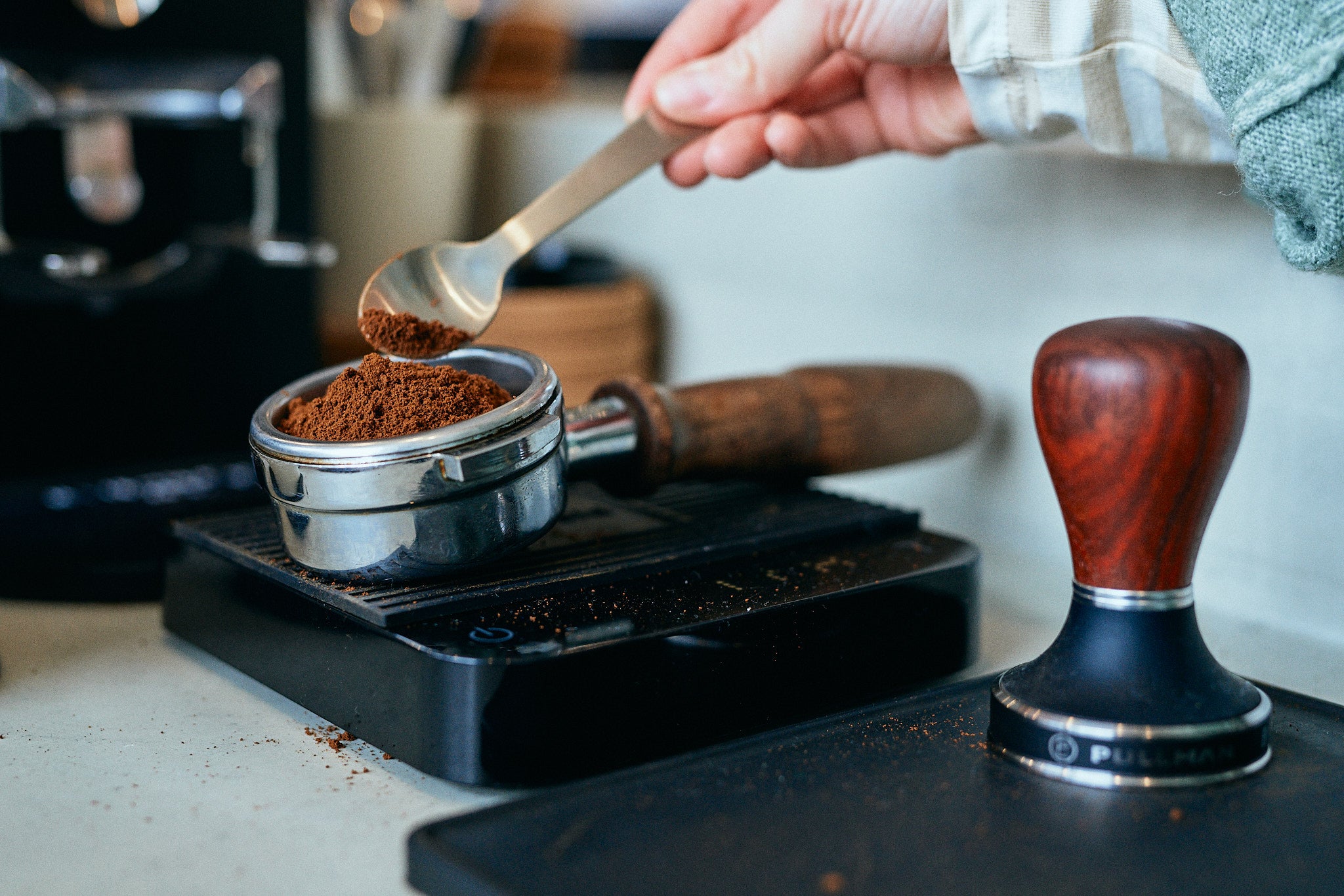- By Alex Lafrenière
Treated (and roasted) with onions
From the moment it is grown to the moment it is brewed, a coffee bean literally sees many colors. The coffee tree blooms with delicate white flowers and produces small green fruits which gradually turn red as they ripen. These juicy cherries are picked and carefully processed to extract the coffee beans which, ultimately, are cooked and then take on their brown color. Let's unravel together the stages that coffee goes through to evolve from dry, green and acidic fruit to a brown, rich-flavored coffee bean, all in the instant of a little coffee break! 
From red to green
Have you ever read Honey on a bag of coffee and were convinced you had landed on a honey-flavored coffee? I am definitely a victim of this scam! In fact, in order to extract the beans from the fruits of the coffee tree, there are several processing methods. The most popular are the wet method (also called washing), the dry method (called natural) and finally, the said honeying (or commonly called Honey).
In the case where the coffee has been wet processed, we understand that the cherries have been deprived of their pulp, that is to say the sweet body enveloping the core of the fruit, after harvest. The seeds then fermented for a few hours and dried slowly. By the cup, this type of processing offers coffees that are generally fruity and thick on the palate. Now, in the case where the coffee was processed in a natural way, the opposite path was taken: the cherries were left to dry in the sun, we made sure to brew each harvest regularly and we came to carefully remove what remained of the pulp. In the cup, we discover a coffee with a complex aromatic profile, medium body and a higher level of acidity. Finally, honeying is a technique representing the perfect mix between the two previous ones. No no, no bees are involved in this technique! Rather, it involves pulping the cherries, drying the seeds in the sun and, above all, preserving a certain quantity of mucilage, that is to say the viscous and honeyed substance surrounding each of the grains. Here, coffee producers can have fun and personalize their recipe by varying the thickness of the mucilage removed around the coffee bean. A process whose grain has a lesser thickness of mucilage will be called Black Honey , a thickness of mucilage between 50 and 75% of its original state will be called Red Honey and finally, when the mucilage is practically intact, we speak of the Yellow process. Honey . Obviously, this rich layer of sugar enveloping the bean will be caramelized in the sun and give a naturally sweet taste to the coffee.
FUN FACT: Coffee production being an art in itself, several other techniques, each more specific than the other, have been developed over the years. Indeed, one of the most expensive coffees in the world is characterized by a process that leaves no one indifferent. Coffee cherry turns out to be an essential part of the diet of certain animals, such as monkeys and birds. So they spoil themselves and pick the perfectly ripe coffee cherries, stuff themselves to their heart's content and digest them. The parchment or, in other words, the envelope which surrounds the grain and which is bathed in the mucilage, protects it during digestion. Believe it or not, but some producers will come and collect the animal droppings, hull them and set aside the perfectly intact coffee beans to then process them. I tell you, these are not pranks!
From green to brown
The very last stage of the metamorphosis of the coffee bean is the one allowing it to go from its green, rock-hard form to the brown bean suitable for consumption. We are talking here about roasting. Without this step, the coffee bean would just be a tiny, dry, sour fruit like a sour patch . Thanks to controlled cooking at around 200 ° C, the color of the grain sets from green to brown, its body swells and above all, its aromas unfold. Roasting requires a rotating oven in which the seeds rotate in all directions until they are cooked and their essential oils caramelize on their surface.

Human intervention is vital during this process. Indeed, the cooking time as well as the maximum temperature determine the intensity of the coffee's taste and these parameters must be meticulously monitored. To do this, roasters must analyze the color that the beans reach as well as their smell. They must also pay attention to the final crackle of the coffee beans, a crackle that sounds suspiciously like microwave popcorn. It is at this moment that you must end the cooking.
Good coffee :)
Alex
Coffee Break with Alex // Treated (and roasted) with onions
By Faux Mouvement


